What is telehealth?
On this page, you will find definitions and examples of telehealth.
Interested in telehealth?
Definition of telehealth
Telehealth can be defined as follows:
What are the technological tools?
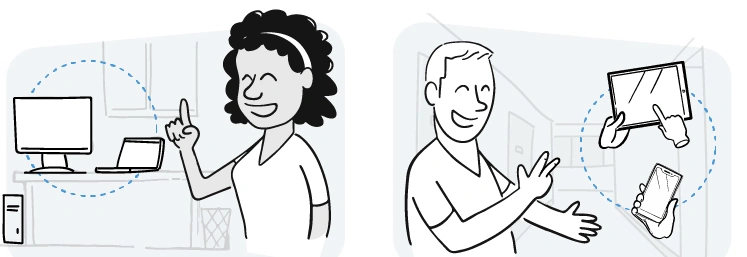
The tools used in telehealth belong to the family of information and communications technologies (ICT). They are computer applications and web platforms. They are safe and designed for health care activities.
To use them, you simply need a computer, smartphone or digital tablet (for example an iPad or an Android tablet). You can use telehealth tools for free.
Two communication modes
Telehealth exchanges can take place in two ways.
In real time
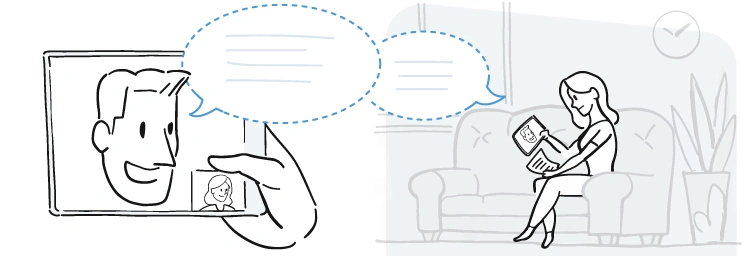
Real-time communication is an exchange between people at the same time.
Example in everyday life: You make a video call with a family member using your digital tablet. You hear and see the person as they speak to you.
In non–real time
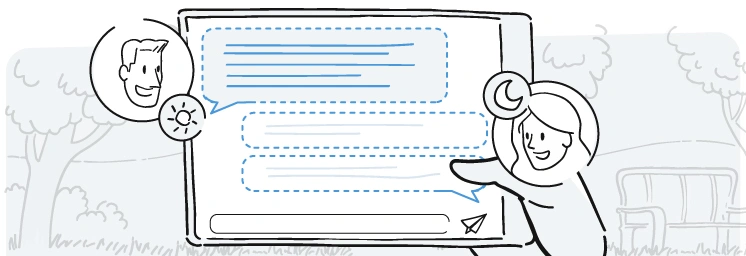
Example in everyday life: You send a text or email to a friend. You have to wait a while before you get a reply.
The six types of telehealth activities
Telehealth is more than a remote consultation between a doctor and their patient. Telehealth activities fall into six categories:
Teleconsultation
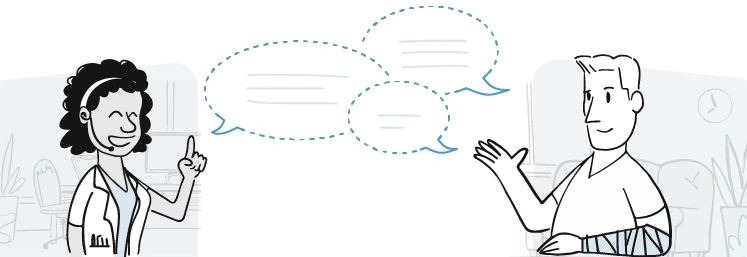
Activity carried out by a professional who provides services to a patient remotely. A teleconsultation can be used to:
- make or confirm a diagnosis;
- follow up on a health condition;
- adjust a treatment.
A teleconsultation can take place in real time or non–real time.
Example: Mario underwent wrist surgery. He uses his computer for a video call with his occupational therapist. He can ask questions and be given information. The exchange also allows him to show the condition of his scar and any changes in his movements.
Tele-assistance
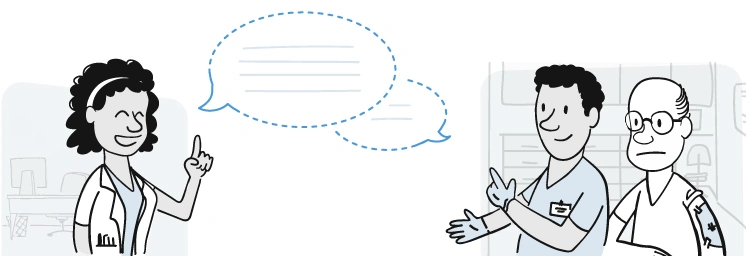
Activity carried out by an expert professional with another professional. The expert professional remotely assists a colleague who is performing an intervention with a patient.
Teleassistance takes place in real time.
Example: Carlos, a nurse in a residential and longterm care centre (CHSLD), is taking care of a resident’s wound. While doing so, he receives advice from a specialized nurse who is in a hospital. They communicate using a cart equipped with a screen and a video camera.
Tele-education
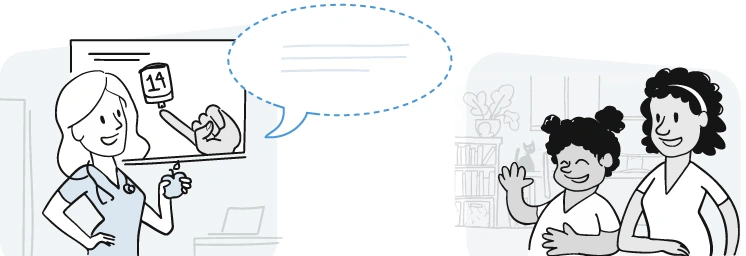
- their illness;
- their symptoms;
- the right actions for their health.
Tele-education can take place in real time or non–real time.
Example: Mégane is a young patient living with diabetes. She is being taught by a local community services centre (CLSC) nurse. Mégane and her mother watch the nurse’s demonstration in their home, on their digital tablet. The nurse explains how to use a glucometer, a device used to measure blood sugar levels.
Telemonitoring
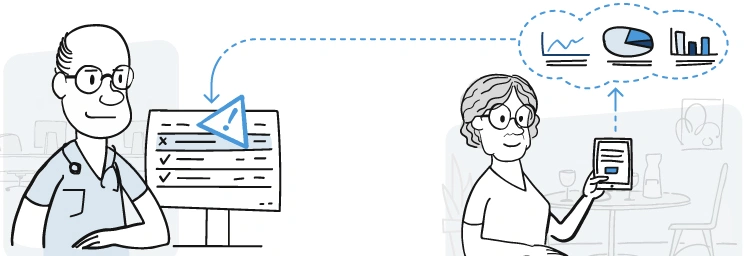
Monitoring activity carried out remotely by a professional for a patient. The patient sends information on a daily basis using a technological tool. The professional looks at the data and carries out continuous remote monitoring. This activity allows the patient to:
- share their symptoms by completing questionnaires;
- communicate directly with their health care team;
- be given information and advice as needed.
Telemonitoring takes place continuously (real time AND non–real time).
Example: Thérèse has a chronic lung disease. She answers questions about her health every day. She does it from home using her mobile device. The respiratory therapist responsible for her followup receives the information on his computer. He can then adjust the treatment and give his patient advice if necessary.
Tele-advice
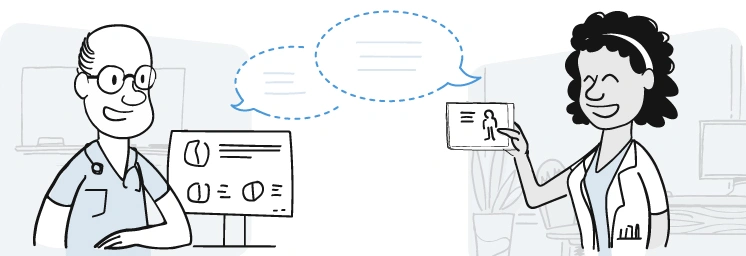
Activity that allows a health professional to give their opinion to another health professional. Teleadvice is provided when the patient is not there and helps to:
- make or confirm a diagnosis;
- choose or adjust a treatment.
Tele-advice can be provided in real time or non–real time.
Example: Emilia is a family doctor who is taking care of a young patient. She uses a specialized web platform to seek the opinion of a pediatrician. The specialist’s reply will help her choose the best treatment for her patient.
Remote court appearance
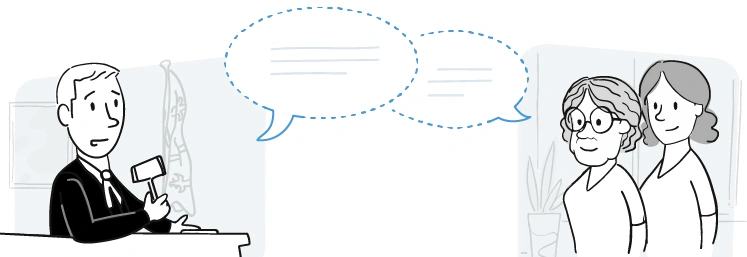
Activity carried out between a health care facility and a court of law. A remote court appearance is intended for people who need to see a judge in connection with their mental state. It allows the person to appear in court without having to travel.
A remote court appearance takes place in real time.
Example: Bernadette lives in a residential and longterm care centre (CHSLD). She has to appear before a judge during a video call. The remote court appearance takes place in a room of the CHSLD in the presence of her daughter and her social worker. The meeting makes it possible to obtain a court order if necessary. The goal is to ensure Bernadette receives the treatments she needs for her health.
Interested in using telehealth for your care?
Talk to your healthcare professional about the possibilities.
Last update: October 2, 2025